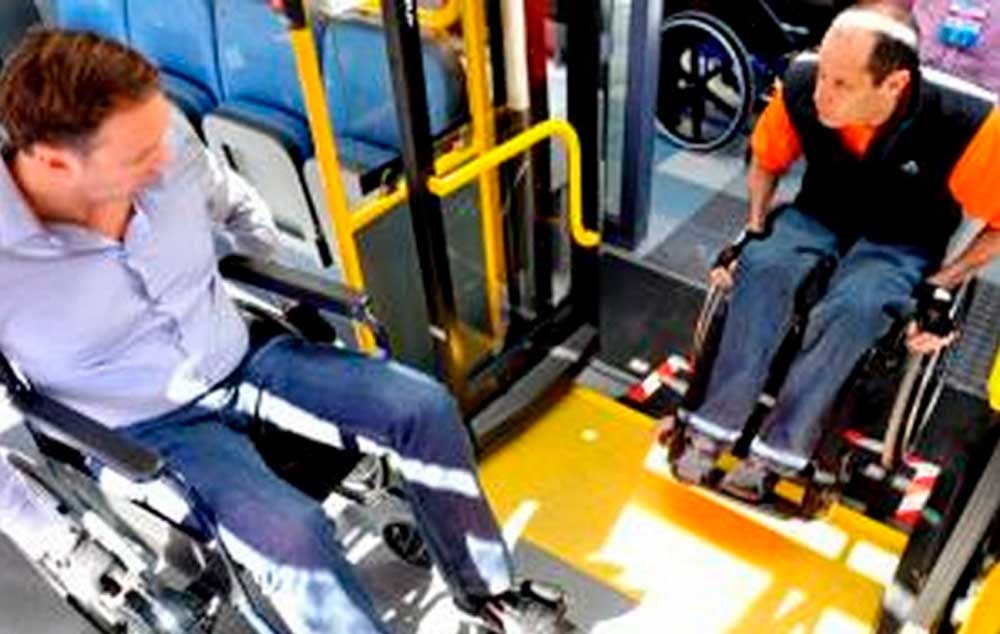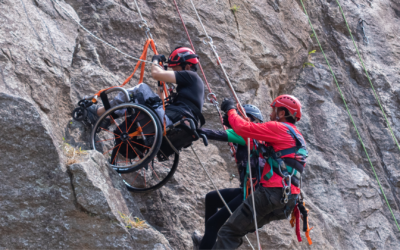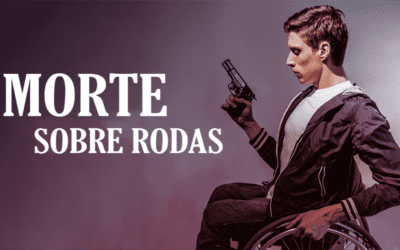
Wheelchair travel can be tough in Cape Town
Cape Town – It took wheelchair-bound Whilma Liedeman three years to find a job.
Then she faced a new problem – how to travel from her home in Atlantis to her new office in Montague Gardens.
“Dial-a-ride, which carries disabled people, was always booked up,” said Liedeman. “I’d come so far, and then it seemed that I would stumble at this last block.”
Last October, she tweeted a message to Brett Herron, mayco member for transport, and challenged him to spend a day in a wheelchair and find out what life in Cape Town is like for someone with a disability.
It took a few months, but on Thursday Herron took up the challenge. He invited Liedeman, who has since made an arrangement to get to work, as well as members of the media and members of disability awareness associations to join him.
The exercise was an opportunity for the city to show its commitment to the principle of “universal accessibility” through expanding the MyCiTi bus network. It also doubled up as an opportunity to receive input from disabled people about the challenges they faced getting around Cape Town.
Liedeman kicked off by complaining about the ramps that extend from the buses to the bus stop platforms.
She said the dip between the platform and ramp made it very difficult to enter the bus without help.
Anthony Ghillino, project manager for the QuadPara Association of the Western Cape and a quadriplegic for the past 20 years, agreed: “Disabled people want independence. Even half a centimetre can be the difference between an access point being accessible or not. It’s such obstacles, and not disabilities, that disable people.”
At Cape Town station, Mthuthuzeli Swartz, Cape Metrorail regional manager, told the party that the current system dated from an era when accessibility was not a priority.
But Metrorail was aware of the shortcomings, he said, and new stations and trains being introduced on the Khayelitsha and Mitchells Plain lines in 2015 would be accessible.
Herron, still sitting in a wheelchair, concluded the exercise with a message of thanks: “It was a challenge. I expected to experience physical exhaustion. Surprisingly, it was not my body, but physical barriers that were outside of my control that impeded me.
“These challenges can’t be fixed overnight, but through incremental changes and keeping a ‘universal access policy’ high on the city’s agenda we can begin to make inroads. We have seen today that there are no halfway marks, either we achieve universal accessibility or we fail.”
Did you know?
– The mirrors in lifts are designed to help people in wheelchairs when reversing out.
– Disabled parking bays are close to shopping mall entrances partly to avoid the risk of people in wheelchairs being run over. The reduced height of a person in a wheelchair can make it difficult for drivers to spot them.
– The ribbed concrete tiles at bus stops, on pavements and at zebra crossings are there to direct visually impaired people.
– Most ATMs are inaccessible to people in wheelchairs since reaching the keypad is difficult from a seated position, and the parallax associated with a seated angle means the buttons next to the screen don’t line up with the appropriate options. – Cape Argus
Source: iol news
Compartilhe
Use os ícones flutuantes na borda lateral esquerda desta página
Siga-nos!
Envolva-se em nosso conteúdo, seus comentários são bem-vindos!
Artigos relacionados
Teleton AACD. A pessoa com deficiência como protagonista.
Teleton AACD. A pessoa com deficiência como protagonista. Uma iniciativa internacional abraçada pelo SBT no Brasil.
Acessibilidade no ESG. Equipotel aborda o tema para o turismo.
Acessibilidade no ESG, para o mercado do turismo. Equipotel aborda a importância da inclusão da pessoa com deficiência.
Morte Sobre Rodas. Filme inclusivo foi candidato ao Oscar.
Morte Sobre Rodas. Dois protagonistas do filme, são pessoas com deficiência, um usuário de cadeira de rodas e outro com paralisia cerebral.






0 comentários